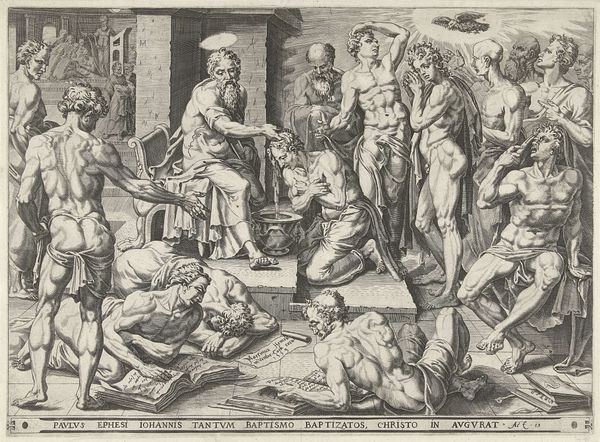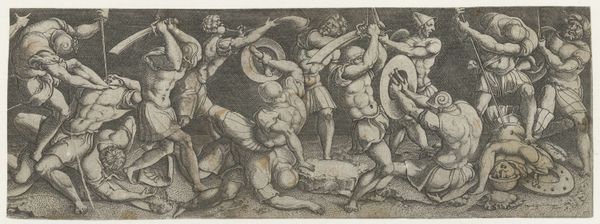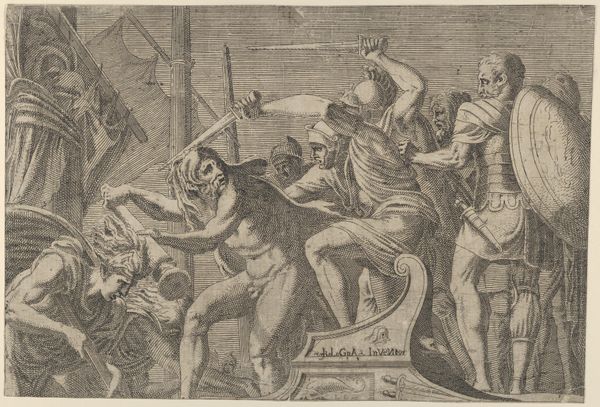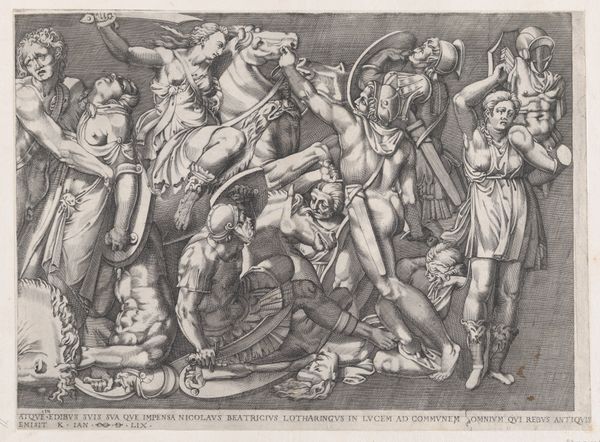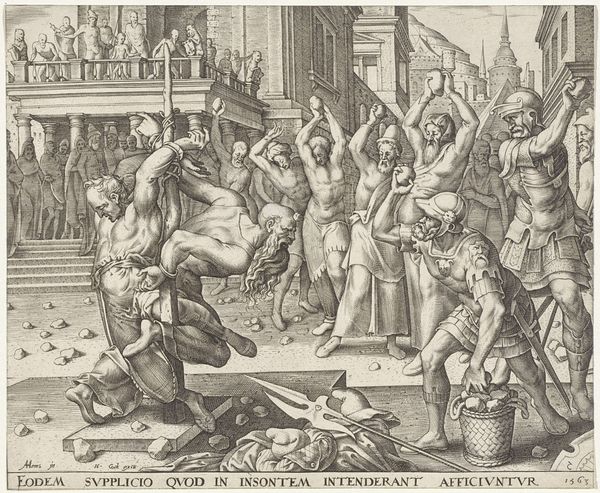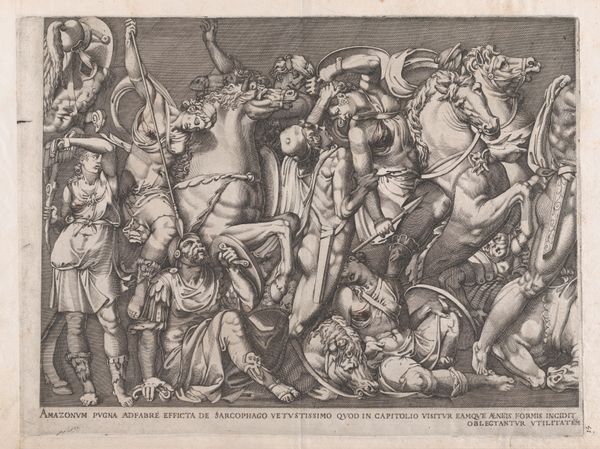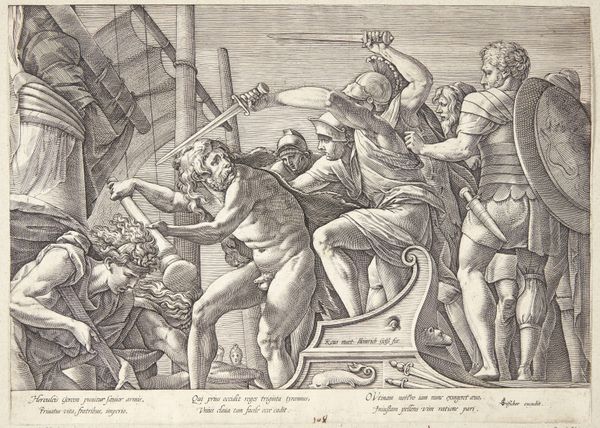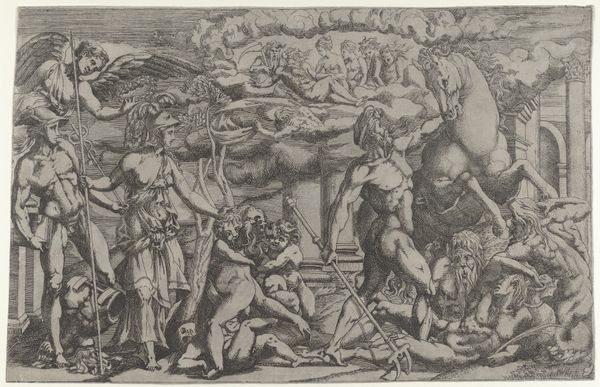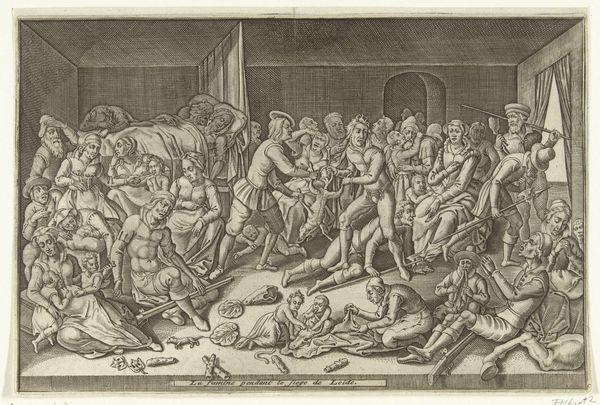
drawing, print, etching, engraving
#
drawing
#
weapon
# print
#
etching
#
figuration
#
horse
#
men
#
history-painting
#
engraving
Dimensions: Sheet: 2 11/16 × 8 11/16 in. (6.9 × 22 cm)
Copyright: Public Domain
Curator: Wow, this etching just explodes with energy. It's so packed and busy! Reminds me of when I try to parallel park in the city. Editor: This, my friend, is "Combats et Triomphes" by Etienne Delaune, crafted somewhere between 1540 and 1583. Look at the detail captured with the engraving technique, teeming with fighting figures on horseback. War as a ballet of brutality, no? Curator: Brutal ballet is perfect! See how the lines kind of vibrate with all that implied motion? What I first thought was just chaos is actually a complex composition—a roiling sea of bodies. It's disturbing and strangely captivating. Did people hang these prints as like... war porn back in the day? Editor: Well, that term might be a tad anachronistic, but you're not entirely off the mark. Consider the historical context: prints like these disseminated classical and contemporary ideas of heroism, leadership, and statecraft. They helped to normalize and even romanticize military conflict within certain elite circles. Note how idealized these bodies are; their suffering is less important than their supposed glory. Curator: Idealized indeed. Everyone's ripped, even while getting impaled. Speaking of the bodies though, I love how Delaune renders the horses, too, so muscular and expressive. They seem to be caught in the middle of screams. Are the horses also complicit here? Editor: Absolutely. War narratives often efface the experiences of animals, naturalizing their role as instruments of human conflict. Yet, as scholars like Donna Haraway have illuminated, the bond between humans and animals, particularly horses in battle, involves deeply complex forms of co-dependence, violence, and mutual transformation. Consider also, who gets commemorated in this heroic frame. Whose stories are erased by the glorification of such clashes? Curator: Oof, heavy. That's kind of bummer but an important bummer. Thinking about this now, "Combats et Triomphes" almost reads like an anti-war piece despite probably being the opposite of that when it was first created. Like, I feel gross even looking at it after you explained that. Editor: Precisely. Viewing art critically allows us to unpack those original intentions, acknowledging the historical conditions while challenging its dominant ideologies. I'll never see battle scenes the same way. Curator: Agreed. My ballet of brutality has officially turned into a mosh pit of moral complexity. Time for coffee!
Comments
No comments
Be the first to comment and join the conversation on the ultimate creative platform.

